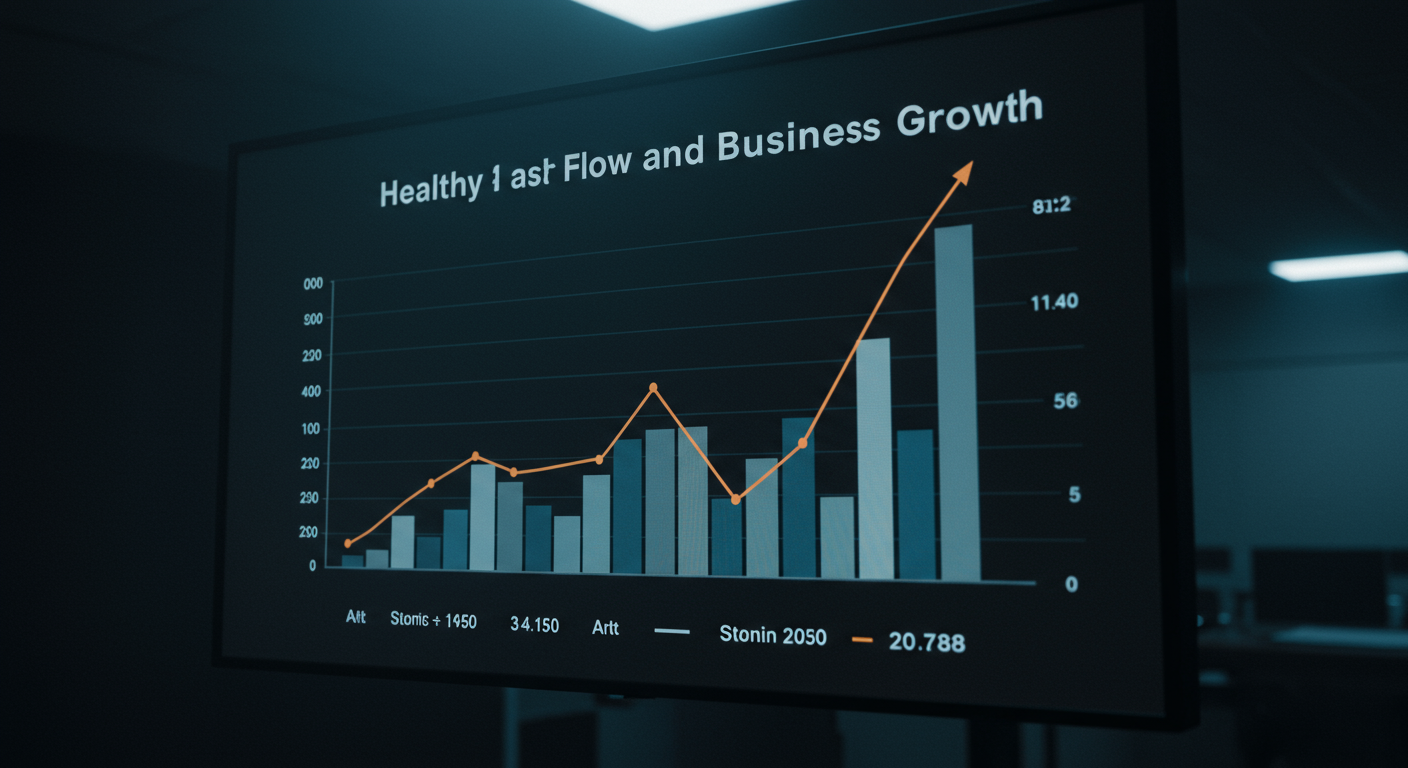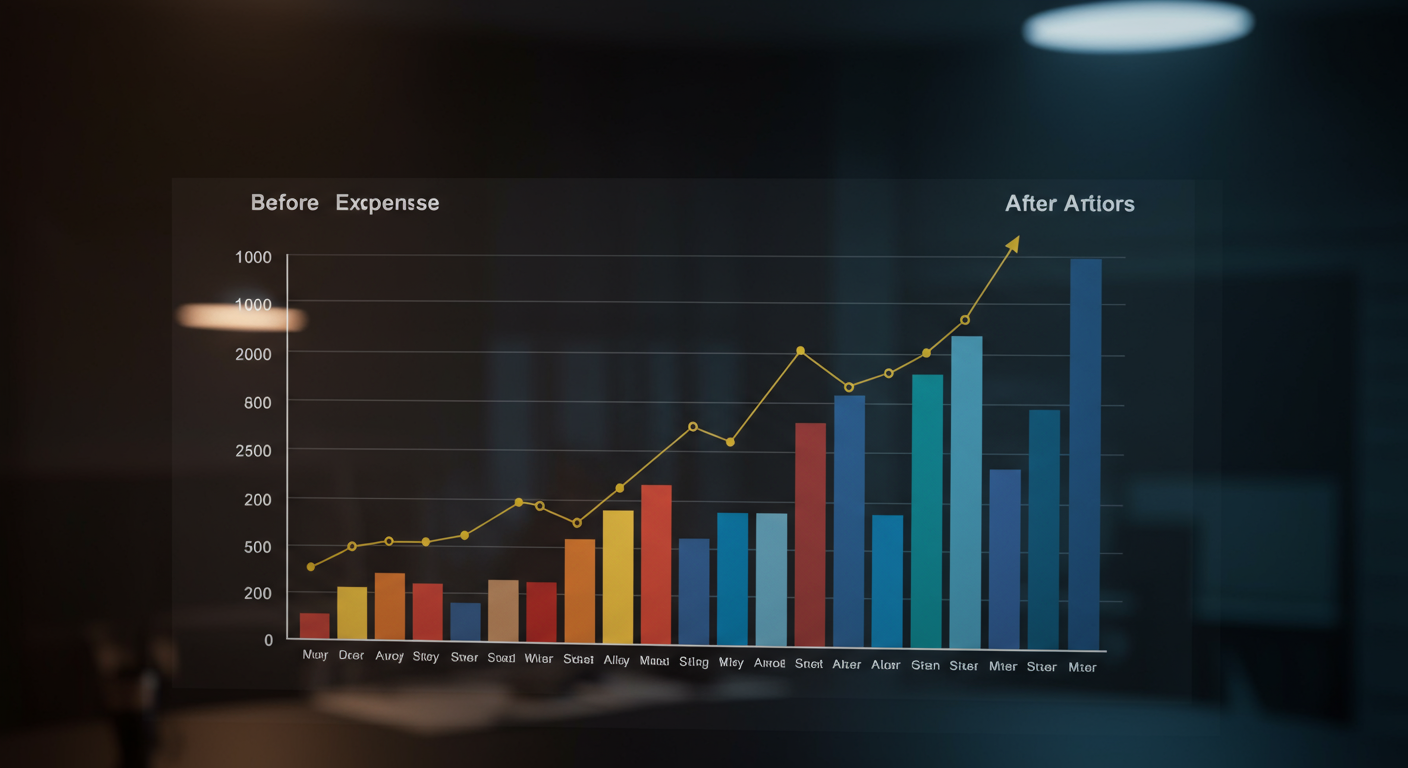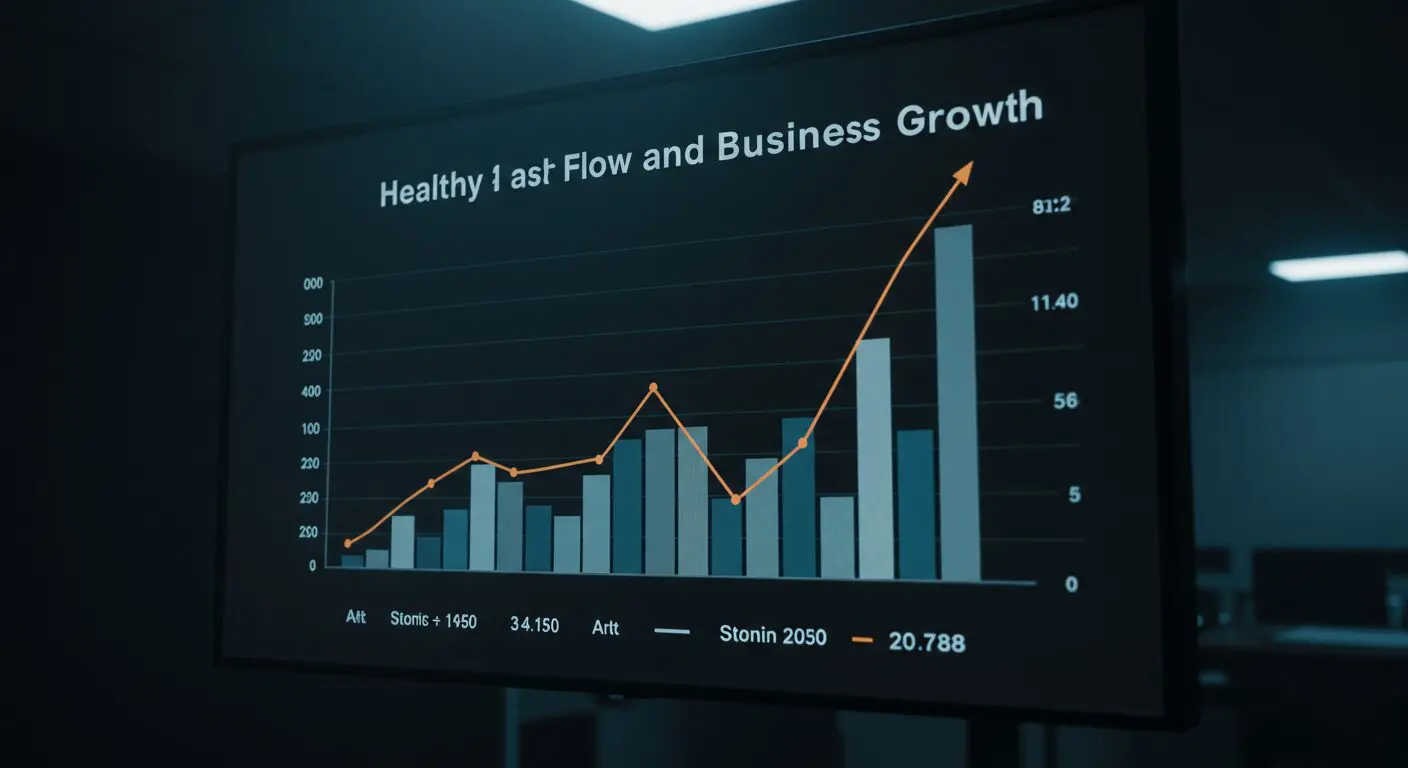Introduction: The Critical Role of Cash Flow in Business Success
Managing cash flow is essential for the sustainability and growth of any business. Cash flow, the movement of money in and out of a company, serves as a vital indicator of financial health. A clear understanding of cash flow management is necessary to maintain stability and leverage opportunities for growth. Businesses that effectively manage cash flow are better positioned to weather financial challenges, invest in new projects, and ultimately achieve their goals.
Defining Cash Flow and Its Importance for Business Sustainability
Cash flow represents the net amount of cash being transferred in and out of a business at any given time. A healthy cash flow allows a company to meet its obligations, such as paying suppliers, servicing debt, and covering operational costs. When organizations prioritize cash flow management, they are laying the foundation for their financial success. A solid cash flow planning strategy includes ongoing cash flow analysis and forecasting, allowing for timely decision-making and improved financial health over the long run.
Highlighting the Consequences of Poor Cash Flow Management
Poor cash flow management can lead to severe consequences, including the inability to pay employees or suppliers, missed growth opportunities, and increased debt. Small businesses can particularly suffer from cash flow problems, as they may lack the financial cushion available to larger corporations. In such situations, companies may find themselves in a cycle of borrowing or relying on credit, which can exacerbate cash flow challenges and compromise their overall financial stability. It is crucial, therefore, for business owners to recognize and address potential cash flow issues before they escalate.
Introducing Q Solutions LLC’s Expertise in Payment Processing Solutions
To navigate the intricacies of cash flow management, businesses can benefit from partnership with experienced financial service providers. Q Solutions LLC specializes in providing flexible and secure payment processing solutions tailored to client needs. These services include options such as Merchant Dual Pricing and level 2 & 3 processing, designed to minimize transaction costs and improve cash flow. By collaborating with Q Solutions LLC, organizations can gain access to reliable payment solutions, allowing them to manage cash flow more effectively and focus on growth.

Cash Flow Management
Mastering Cash Flow Forecasting and Monitoring
Cash flow is the lifeblood of any business, and mastering forecasting and monitoring is essential for financial health and stability. Companies must adopt precise techniques and utilize modern tools to achieve accurate cash flow analysis and make informed decisions.
Techniques for Accurate Cash Flow Forecasting
Effective cash flow forecasting begins with a thorough analysis of historical data. Businesses should collect financial records and use them to identify trends and patterns that can inform future performance. By taking into account seasonality, sales cycles, and economic indicators, organizations can create realistic projections. Additionally, applying various forecasting methods, such as the direct and indirect cash flow methods, helps refine accuracy. Regularly updating these forecasts is necessary to adjust for unexpected changes in the market or business environment, ensuring the projections remain relevant and reliable.
Tools and Technologies for Effective Cash Flow Monitoring
Today’s businesses have access to a variety of tools and technologies that facilitate cash flow monitoring. Software solutions such as accounting platforms often come equipped with built-in cash flow management features that allow companies to track and analyze their cash flow efficiently. Furthermore, integrating automation tools can help streamline the gathering of financial data from various sources, enabling better visibility into cash positions. Cloud-based platforms are also beneficial, as they provide real-time updates, making it easier for management to make decisions based on current financial information.

cash flow monitoring
Interpreting Cash Flow Data to Make Informed Business Decisions
Interpreting cash flow data accurately is crucial for guiding business strategies. Once businesses have their cash flow forecasts and monitoring tools in place, they can analyze the collected data to identify potential cash flow problems before they escalate. Understanding whether the business is experiencing a cash surplus or shortfall allows for proactive measures such as adjusting spending, managing inventory, or reevaluating payment terms with suppliers. By leveraging this insight, companies can develop effective cash flow strategies that not only support their immediate needs but also enable long-term growth and stability.
Optimizing Invoicing and Payment Processes for Faster Payments
In an era where cash flow is vital for business operations, optimizing the invoicing and payment processes is crucial for ensuring faster payments. By adopting several strategies, businesses can improve their cash flow and maintain a healthy financial status.
Strategies for Efficient Invoicing and Payment Processing
To achieve a healthier cash flow, businesses must focus on creating and sending invoices promptly and accurately. This means ensuring that invoices are free from errors and discrepancies, as this can delay payment. Implementing an automated invoicing system can help streamline this process. Automation reduces manual errors and allows for consistent billing cycles, ensuring clients receive their bills on time. Additionally, incorporating clear payment terms and conditions directly onto invoices can help set expectations for both parties.
Offering Diverse Payment Options to Cater to Customer Preferences
Today’s businesses must cater to varying customer preferences when it comes to payment methods. By offering diverse payment options—such as credit cards, online payment platforms, and direct bank transfers—companies can facilitate quicker payments. Customers are more likely to pay promptly when they have flexible payment choices that suit their preferences. Providing options can significantly reduce friction in the payment process and ultimately contribute to improving cash flow.
Implementing Measures to Reduce Payment Terms and Accelerate Collections
Reducing the time it takes to collect payments is paramount for optimizing cash flow. Businesses might consider shortening payment terms, such as moving from net 30 to net 15 days. Incentivizing early payments can also help, such as offering discounts for customers who settle their invoices ahead of schedule. Regular follow-ups and reminders can help in encouraging timely payments. Employing these measures can create a firm approach to collections while maintaining positive client relationships.

Invoicing and Payment Process Optimization
Effective Strategies for Expense Management and Cost Reduction
Managing expenses and reducing costs are essential components of a healthy business strategy. By effectively overseeing expenditures, businesses can allocate funds more efficiently, increase profitability, and ensure long-term sustainability. Here, we delve into strategies that can assist in identifying unnecessary expenses, negotiating favorable supplier terms, and implementing cost-saving measures without disrupting your operations.
Identifying and Eliminating Unnecessary Business Expenses
The first step toward effective expense management involves a thorough analysis of current expenditures. Businesses often incur costs that do not contribute to revenue or growth. Conducting a comprehensive audit of all expenses can help identify areas where cuts can be made. Examples include subscription services no longer in use, outdated software, and excessive utility bills. By eliminating these unnecessary expenses, companies can free up capital for more productive investments.
Negotiating Favorable Terms with Suppliers to Lower Costs
Your suppliers play a crucial role in managing expenses. Establishing strong relationships with them can lead to better pricing and more favorable terms. Consider negotiating discounts for early payments or bulk purchases. Annual reviews of supplier contracts can also uncover additional savings opportunities. Remember, keeping an open line of communication often leads to better terms and can strengthen the partnership.
Implementing Cost-Saving Measures Without Compromising Business Operations
Cost-saving measures should not hinder business efficiency or employee productivity. Explore options such as remote work arrangements that can reduce overhead costs like office space and utilities. Additionally, evaluate your current technology stack; investing in versatile software can automate processes, saving both time and money. Being proactive in seeking innovations can lead to sustainable savings while maintaining the integrity of your business operations.

Expense Management Strategies
Building a Strong Cash Reserve: A Safety Net for Unexpected Events
In the ever-changing business environment, having a robust cash reserve is essential. This financial buffer acts as a safety net during uncertain times, allowing businesses to navigate unexpected events without causing upheaval in their operations. Understanding how to determine the appropriate amount to set aside, strategies for building and maintaining this reserve, and how to utilize it effectively are crucial for long-term stability and success.
Determining the Appropriate Amount for a Cash Reserve
Establishing the right cash reserve is a critical aspect of financial planning. A general guideline suggests that businesses should aim to have at least three to six months’ worth of operating expenses saved. However, the ideal amount can vary based on factors such as industry volatility, sales cycles, and business size. Conducting a cash flow analysis can help identify your specific needs. By considering previous fluctuations in income and potential future challenges, you can develop a tailored cash reserve plan that aligns with your business model.
Strategies for Building and Maintaining a Healthy Cash Reserve
Building a cash reserve requires discipline and strategic planning. One effective strategy is to allocate a percentage of monthly profits directly into a savings account designated for emergencies. This approach can help establish a habit of saving that ensures your reserve grows over time. Additionally, reviewing your expenses regularly can identify areas where costs can be cut, freeing up more cash for reserves. Automation of savings can also assist in maintaining consistency without requiring continuous manual intervention.
Utilizing the Cash Reserve to Navigate Unexpected Financial Challenges
When unexpected expenses arise, having a cash reserve can make a significant difference in how a business manages those challenges. Whether it’s an unforeseen repair, a temporary slowdown in sales, or a sudden increase in costs, accessing your cash reserve allows for quick financial maneuvering. This capability not only aids in sustaining operations but also protects your business from having to incur debt or rely heavily on credit, ultimately contributing to stronger financial health.

Building a strong cash reserve
Securing Your Financial Future with Proactive Cash Flow Management
Establishing a healthy cash flow is crucial for the long-term success of any business. Proactive cash flow management not only helps in navigating immediate financial challenges but also lays the foundation for sustainable growth. Below, we will discuss key strategies for optimizing cash flow and the lasting benefits of staying ahead in cash flow planning.
Recap of Key Strategies for Optimizing Cash Flow
To maintain a robust cash flow, businesses should adhere to a variety of strategies. Implementing cash flow analysis helps in identifying patterns and forecasting future cash needs. This practice aids businesses in planning for client payments, inventory purchases, and other operational costs. Additionally, utilizing techniques such as maintaining a cash reserve can provide a buffer during lean periods. Regular assessments of payment cycles and supplier terms can lead to improved financial health by creating a more predictable cash flow stream.
Learn More About Q Solutions LLC’s Payment Processing Solutions
If your organization is looking to reduce payment processing fees or find reliable payment solutions, consider the offerings from Q Solutions, LLC. Their range of services includes Merchant Dual Pricing and customizable gift and loyalty card programs, which empower businesses to enhance transaction efficiency while saving money. By integrating accurate payment processing into your cash flow strategy, businesses can effectively manage their revenue streams and reduce the risk of cash flow problems.
Long-term Benefits of Proactive Cash Flow Management
Establishing a proactive approach to cash flow management leads to numerous long-term benefits. Businesses that prioritize cash flow forecasting can not only avert potential cash flow challenges but also seize growth opportunities as they become available. Understanding the importance of cash flow enables organizations to achieve financial stability, cultivate investor confidence, and build resilience against market fluctuations. By adopting consistent cash flow strategies, companies can enjoy increased profitability and sustainable success for years to come.

Cash Flow Management


No responses yet